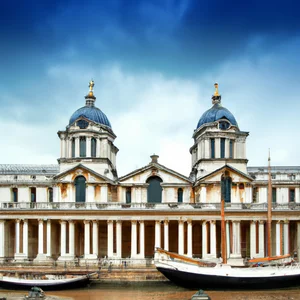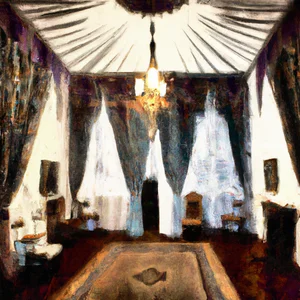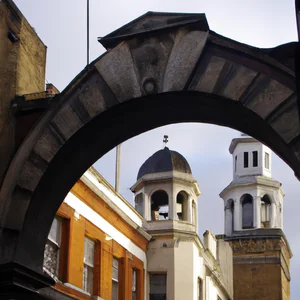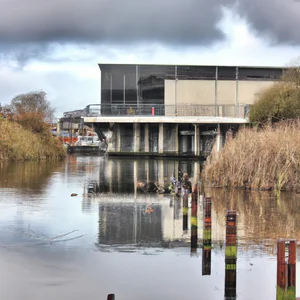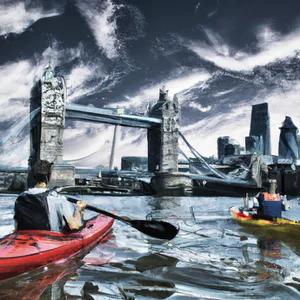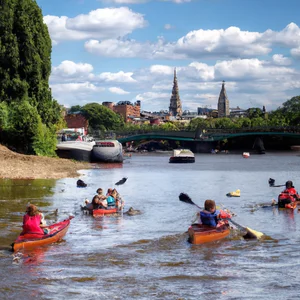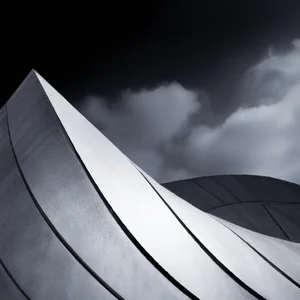Book your experience
Royal Opera House: Architecture and design in the opera house in Covent Garden
The Royal Opera House is truly a place not to be missed if you are in Covent Garden. You know, it’s like a jewel set in the middle of a city that always has something to tell. The architecture there is a true marvel, with those details that make you think of a bygone time, but with a touch of modernity that never hurts.
When you enter, you feel like you’re taking a dive into the past: the corridors, the chandeliers that shine like stars, and those red armchairs that seem to tell you “sit down and enjoy the show!” Well, I remember the first time I went there; I really wanted to see an opera, but I was more struck by the atmosphere. It’s as if every corner whispers stories of the artists, musicians and dancers who have walked it.
Of course, the outside is beautiful, but it is inside that the true enchantment manifests itself. Details, such as mosaics and elegant curves, are a joy to behold. I think that, for those who love art, it’s a bit like entering a work of art in itself. I don’t know, maybe it’s just my impression, but every time I go back, I feel a new emotion, almost as if I discovered a hidden secret.
And then, let’s talk about the shows for a moment! I saw one a few months ago, and I tell you, the energy you feel in the room is crazy. The music, the costumes, the dancers who seem to fly… it’s as if time stopped. Of course, there are times when I wonder if I’m really enjoying it all, or if it’s just the charm of the place that makes me feel this way. But, really, who wouldn’t want to have an experience like this?
In conclusion, the Royal Opera House is not just a place where you go to see operas. It is a world unto itself, where architecture and design intertwine with the magic of art. If you happen to pass through those parts, keep an eye out. Maybe it will surprise you, just like it happened to me.
Fascinating history of the Royal Opera House
A Journey Through Time
Every time I cross the threshold of the Royal Opera House, the feeling is that of entering a stage of history. I vividly remember the first time I attended an opera here: the air was filled with anticipation, and the scent of rich wood and red velvet mingled with the palpable emotion of the audience. This temple of opera, located in the heart of Covent Garden, is not just a performance venue; it is a living monument that tells centuries of history.
Built in 1732, the Royal Opera House has gone through numerous changes and reconstructions, especially after devastating fires that threatened its existence. Its current form, completed in 1999, represents a perfect fusion between the past and the present, making it an extraordinary example of modern architecture that respects its historical roots. For those who wish to delve deeper, the official website of the Royal Opera House offers a detailed chronology of the events and transformations that have marked this iconic place.
Insider advice
If you want to live a unique experience, I recommend visiting the Royal Opera House during one of its Open House Days. These events, held throughout the year, offer the chance to discover hidden corners and fascinating stories that you wouldn’t find on a normal tour. It’s an opportunity to explore the rich history of opera in a way that few are fortunate enough to experience.
Cultural Impact and History
The Royal Opera House is not just a stage for operas and ballets; it is also a symbol of British culture. During the Second World War, when London was bombed, the opera house remained open, offering comfort and recreation to those seeking an escape from harsh reality. This commitment to culture has cemented the Royal Opera House as a beacon of hope and resilience.
Sustainability and Responsibility
Today, the Royal Opera House is also committed to sustainability, adopting responsible practices to reduce its ecological footprint. From the renovation of spaces to improve energy efficiency to the use of recycled materials, every choice is a step towards a greener future for art. This is a fundamental aspect to consider in responsible tourism.
Invitation to Reflection
As you immerse yourself in the history and beauty of the Royal Opera House, I invite you to reflect: how can culture and art influence our daily lives and the way we see the world? Every opera, every ballet, is not just an aesthetic experience, but an opportunity to explore humanity as a whole. And you, what story will you take home after visiting this extraordinary place?
Design and architecture: a visual journey
A personal anecdote
I remember the first time I crossed the threshold of the Royal Opera House. The soft light of the foyer, the golden details that adorned the walls and the scent of fine wood enveloped me in a warm embrace. But it was when I looked up at the ceiling that I was truly speechless: a work of art in its own right, a play of light and shadow that seemed to dance above me. That wonder made me understand not only the beauty of the work, but the importance of design and architecture in this historic theater.
The architecture of the Royal Opera House
The Royal Opera House, located in the heart of Covent Garden, is a masterpiece of neoclassical architecture, originally designed by Edward M. Barry in the 19th century. The exterior, with its majestic classical-style facade, is an irresistible invitation to explore its interior. Every detail, from the crystal chandeliers to the elegant red armchairs, has been designed to offer not only a spectacular view but also a complete sensory experience.
Practical information
Currently, the Royal Opera House offers guided tours that allow visitors to discover the history and architecture of the place. The visits, which last about an hour, can be booked online and are held in different languages. It is advisable to check the official website for updates on times and availability.
An insider tip
If you want a unique experience, try visiting the Royal Opera House during the Christmas period. The festive decorations transform the theater into an enchanted stage, and attending an opera surrounded by these wonders is an unforgettable experience. Also, don’t forget to explore nearby Covent Garden Market, where street performers and unique boutiques liven up the atmosphere.
The cultural impact
The design and architecture of the Royal Opera House not only captures visitors’ attention, but also reflects a profound cultural heritage. Over the years, the theater has hosted some of the most iconic productions in opera history, helping to define the cultural scene of London and the United Kingdom. Its architecture has become a symbol of an era in which art and beauty were at the center of social and cultural life.
Sustainability and responsibility
Recently, the Royal Opera House has launched initiatives to make its design more sustainable, such as using recycled materials for scenography and implementing energy-efficient technologies. This commitment to sustainability is an important step towards environmental responsibility in the world of opera.
An unforgettable experience
For an experience that combines architecture and culture, I recommend attending one of the Royal Ballet’s open rehearsals. These sessions offer an exclusive look behind the scenes, where you can appreciate not only the art of dance, but also the beauty of the stage.
Myths to dispel
One of the most common misconceptions about the Royal Opera House is that it is only accessible to a small elite. In fact, the theater offers a wide range of ticket options, making opera accessible to all. You don’t need to be an expert to enjoy a show; the emotion and beauty of art speak to everyone.
A final reflection
The next time you find yourself in front of an architectural work like the Royal Opera House, ask yourself: what story does this structure tell? You may discover that every corner, every color and every detail has a profound meaning, a link with the past which continues to influence the present. Ultimately, architecture is more than just construction; it is an experience that invites you to live it.
Unique experience: attending a live opera
When I first stepped into the Royal Opera House, my heartbeat synchronized with the melodious notes ringing in the air. The atmosphere was full of expectation, a mixture of elegance and magic. Sitting among the red armchairs, with the scent of fine wood wafting, I understood that attending a live opera is not just a show, but a sensorial experience that involves soul and mind.
The magic of live opera
The Royal Opera House, located in the heart of Covent Garden, offers programming that ranges from timeless classics to contemporary operas, making each visit unique. The current season features operas such as La Traviata and Carmen, which promise to transport you to distant worlds. According to the official website of the Royal Opera House, tickets can be booked up to a month in advance, but don’t forget to check last minute offers for affordable seats.
An insider tip
A well-kept secret among regulars is to arrive an hour before the show. Not only will you have time to enjoy a glass of wine in the foyer bar, but you will also be able to admire the beauty of the interior architecture and, with a bit of luck, attend an open rehearsal. This moment of intimacy with art will give you an even deeper and more personal experience.
The cultural impact of the work
Opera has always played a crucial role in British culture, helping to shape the country’s artistic landscape. The Royal Opera House is not just a place where singers and musicians perform; it is a symbol of a cultural legacy that continues to influence generations of artists and enthusiasts. Its story is imbued with passion, emotion and innovation, reflecting the dynamism of London’s cultural scene.
Towards sustainable tourism
In an age where sustainability is key, the Royal Opera House is committed to reducing its environmental impact. From waste reduction to the choice of sustainable materials for production, every small gesture counts. Attending a show here is not only a way to support the arts, but also to contribute to a more sustainable future.
An invitation to live the experience
Imagine being enveloped by music, as the curtain rises and your heart beats in unison with the artists’ powerful voices. Don’t miss the opportunity to experience live opera at the Royal Opera House, an experience that promises to be etched in your heart forever. You may also consider attending a pre-show workshop to deepen your knowledge of the work you are about to see.
Final reflection
What’s the last show that made you feel alive? Attending a live opera is a way to rediscover the beauty of art in a context that stimulates all the senses. I invite you to reflect on how a shared experience in front of a performance can change your perspective on art and the world around you. Are you ready to be carried away by the magic of the Royal Opera House?
The secrets of the main hall: acoustics and beauty
An echo of emotions
I remember the first time I crossed the threshold of the main hall of the Royal Opera House. As my gaze was captured by the red drapes and glittering chandeliers, a shiver ran down my spine. The air was full of anticipation, and it wasn’t just the anxiety of witnessing an extraordinary performance, but also the awareness of being in a place where every musical note is intertwined with history. The acoustics of this hall are so perfect that even the slightest whisper of a soprano can reach every corner, enveloping the audience in a sonic embrace.
An engineering masterpiece
The main hall of the Royal Opera House, inaugurated in 1858, is a true jewel of neoclassical architecture. But it’s not just its visual beauty that strikes you; what is most surprising is its acoustics, considered among the best in the world. This is the result of careful engineering design, combining traditional materials with modern techniques. Not surprisingly, experts recommend sitting in the middle seats for an optimal sound experience.
An insider tip
A trick that few people know is to arrive a little early and listen to the dress rehearsal. Even if you don’t have a ticket, you may have the opportunity to attend a rehearsal session, where the artists and orchestra refine their performances. This moment is unique: you can feel the energy and commitment they transmit, making the experience even more authentic.
A cultural impact
The main hall is not just a place of entertainment, but a symbol of London culture and history. It is here that the biggest names in opera and ballet have performed, helping to define the city’s cultural identity. Each show is a piece that enriches London’s artistic mosaic, influencing generations of artists and spectators.
Towards a sustainable work
The Royal Opera House is also committed to sustainability. Events are organized with an eye to environmental impact, and the use of recyclable materials for scenography is increasingly common. Participating in a show in this context also means supporting responsible and conscious practices.
An invitation to dive
If you are in London, don’t miss the opportunity to see an opera or ballet in this magical hall. Whether you’re a fan of the genre or a novice, the experience will leave you speechless. Additionally, you might consider booking a guided tour to learn the ins and outs of preparing for a show.
Myths and reality
A common misconception is that the main hall is only accessible to those who can afford expensive tickets. In fact, there are options for all budgets, including last minute ticket sales and rerun promotions. Don’t be put off by the prices: the beauty of the work is within everyone’s reach.
A final reflection
As I left the room, with the echoes of the notes still buzzing in my ears, I asked myself: how many stories and emotions have been shared in this space? What impact will my presence here, in a place so steeped in history, have? I invite you to reflect on these questions as you plan your visit to the Royal Opera House. The acoustics and beauty of this room will be waiting to tell you their fascinating story.
Historical curiosities: little-known anecdotes
A journey through time within the walls of the Royal Opera House
I still remember the moment when, walking through the corridors of the Royal Opera House, I came across a small scrap of history: an old poster of a world premiere, yellowed by time, announcing the opera “La Bohème” in 1896. This is not just a place where works are performed; the Royal Opera House is a sanctuary of fascinating stories and little-known anecdotes that make the experience even more engaging.
Surprising anecdotes
Visitors are often unaware that the Royal Opera House has suffered no fewer than three devastating fires throughout its history. The most famous, which occurred in 1808, destroyed much of the original structure. Curiously, the architect Charles Barry, who designed the new opera, was so fascinated by the idea of building a theater that could resist fire, that he incorporated extraordinary innovations, such as fire doors and fireproof materials, which are still in use today.
Another surprising anecdote is linked to the illustrious dancer Anna Pavlova. It is said that, during one of her performances, her dress got stuck in a mechanism on the stage. Instead of stopping, she continued dancing, turning a potential disaster into an unforgettable performance. This spirit of professionalism has become part of the Royal Opera House’s legacy.
An insider tip
If you want to discover more historical curiosities, I recommend taking one of the guided tours of the Royal Opera House, available almost every day. These tours offer the opportunity to see not only the majestic main hall, but also areas normally closed to the public, such as backstage and rehearsal rooms. Don’t forget to ask your guide to tell you the most incredible stories related to the artists who have graced this stage.
The cultural impact
The Royal Opera House is not just a theatre; it is a symbol of British culture and a point of reference in the performing arts. It has hosted countless internationally renowned artists who have influenced the cultural landscape of not only the UK, but the entire world. Its history is intertwined with historical events, such as the First World War, when the theater became a refuge for soldiers and refugees.
Sustainability and responsibility
In an age where sustainability is key, the Royal Opera House is committed to reducing its environmental impact by implementing eco-friendly practices in its events and productions. For example, they are exploring the use of recycled materials for sets and promoting low-carbon initiatives.
Immerse yourself in the atmosphere
Imagine walking through the elegant rooms of this historic theater, surrounded by the echoes of laughter and applause, while the scent of fresh flowers fills the air. Every corner tells a story, every chair bears witness to heartbreaking and triumphal emotions.
An experience worth trying
For an unforgettable experience, consider purchasing tickets to one of the scheduled operas or ballets. Not only will you have the opportunity to appreciate live art, but you will also be able to come into contact with a tradition that has its roots in the centuries.
Myths to dispel
A common misconception is that the Royal Opera House is only accessible to an elite of opera enthusiasts. In fact, there are affordable ticket options, making the opera an affordable experience for everyone.
A personal reflection
Next time you visit the Royal Opera House, take a moment to reflect on all the stories these walls have to tell. Which anecdote struck you the most? Have you ever wondered what impact culture can have on our way of life? The magic of theater is not only in the stage, but also in the stories we share.
Sustainability in the world of opera: a real commitment
When I attended a performance at the Royal Opera House, I was struck not only by the magnificence of the opera, but also by the facility’s commitment to sustainability. During my visit, I noticed a small but significant information board describing how the theater was trying to reduce its environmental impact. This was just the beginning of a journey that revealed a growing focus on responsible practices in an environment traditionally seen as a bastion of luxury.
Sustainable practices in action
In recent years, the Royal Opera House has undertaken a number of initiatives to promote sustainability. Among the most significant is the waste reduction program, which aims to recycle 75% of the materials used during production. Furthermore, the theater has invested in LED lighting technologies and efficient heating systems, thus reducing energy consumption. Local sources, such as the London Evening Standard, have highlighted how the Royal Opera House is becoming a model for other cultural institutions.
An insider tip
If you’d like to discover a little-known aspect of the Royal Opera House’s sustainable efforts, take one of their Green Tours. These guided tours offer a unique opportunity to explore not only the stage and backstage, but also the eco-friendly practices implemented. It is a way to see the theater not only as a place of artistic beauty, but also as an example of social and environmental responsibility.
The cultural impact of sustainability
The push towards sustainability in the world of opera is not just a matter of environmental responsibility; it is also a question of cultural heritage. As awareness of environmental issues increases, theaters around the world are reconsidering their role. Sustainability therefore becomes a fundamental element of cultural identity, which invites visitors to reflect on a greener and more inclusive future.
Towards responsible tourism
When visiting the Royal Opera House, please consider adopting responsible tourism practices. Use public transport to reach Covent Garden, attend events that promote sustainability and support productions that use eco-friendly materials. These small choices can contribute to a big change.
An experience not to be missed
Don’t miss the opportunity to attend a performance of an opera that embraces the theme of sustainability. Many of the most recent works not only entertain, but also stimulate critical reflection on environmental issues. The work The Last Days of Mankind, for example, addresses the consequences of climate change through an engaging narrative.
Myths to dispel
A common misconception is that opera and sustainability are in conflict, with the former seen as elite art uninterested in social problems. However, places like the Royal Opera House demonstrate that it is possible to combine great art and environmental responsibility.
A final reflection
As you leave the Royal Opera House, ask yourself: How can art inspire positive change in our world? The theatre’s commitment to sustainability is not only a necessary step, but an opportunity to transform the cultural experience into a powerful tool for awareness and action.
The backstages of art: exclusive and private tours
When I first walked through the doors of the Royal Opera House, my curiosity drove me to explore not only the glittering stage, but also the mysteries that lay behind the scenes. During a private tour, I had the opportunity to walk the historic corridors where the greats of music and dance have left their mark. The feeling of being in a place where art comes to life is indescribable; there is a palpable energy, as if every step could awaken a memory of an unforgettable performance.
Practical information
Backstage tours are available to book via the Royal Opera House’s official website. They offer a unique experience, led by experts who share fascinating stories and technical details that can rarely be heard during a normal visit. It is advisable to book in advance, especially during high season, to guarantee a place.
An insider tip
A little-known tip for those taking these tours is to ask your guide about the various equipment used for the productions. Often, there are innovative technologies that are not visible to the public during performances, such as lighting systems and mechanisms scene. This not only enriches the understanding of the art, but also offers a fascinating glimpse into the work that goes on behind the scenes.
Cultural and historical impact
The Royal Opera House is not only a monument of art, but also a symbol of cultural resilience. Since it opened in 1732, it has undergone various renovations and changes, reflecting the transformations of British society and culture. This place has hosted works that have marked eras and movements, influencing generations of artists and opera lovers.
Sustainable tourism practices
In recent years, the Royal Opera House has implemented sustainable practices, such as using recycled materials for scenography and optimizing energy consumption. Taking a backstage tour is not only an opportunity to discover art, but also a way to support an institution that is committed to reducing its environmental impact.
An experience not to be missed
During the tour, don’t miss the opportunity to visit the costume workshop. Here, artisans create wearable works of art, using traditional techniques and innovative materials. Observing the creative process just a few steps away from you is an experience that enriches the visit and makes you further appreciate the work behind each performance.
Myths and misconceptions
A common misconception is that backstage areas are only accessible to a privileged few. In reality, with the right ticket, anyone can discover the secrets of opera production. This opens doors to a wider audience, making art more accessible and shared.
In conclusion, the Royal Opera House backstage tour offers a unique opportunity to explore a world that is not just about stages and lights, but about passion, dedication and creativity. What other art form has ever made you want to discover its hidden secrets?
Arts and culture: the influence of the Royal Opera House
I remember the first time I crossed the threshold of the Royal Opera House, a place where art and culture intertwine in a timeless embrace. Sitting in an armchair, surrounded by an audience eager to experience the emotion of an opera, I realized how much this stage is a crossroads of talents and stories. Each performance tells not only the plot of a work, but also the dialogue between different cultures and artistic traditions that have found a home in this iconic space.
A crossroads of cultures
The Royal Opera House, with its historic home in Covent Garden, is much more than just a theatre. It is a symbol of how art can unite people from all social and cultural backgrounds. From great opera names such as Maria Callas and Luciano Pavarotti, to the Royal Ballet dancers who took contemporary dance to new heights, every artist who graced its stage has helped make the Royal Opera House a beacon of creativity. The programming offers a mix of classic works and innovative productions, reflecting the evolution of public tastes and expectations.
An insider tip
If you want to live a unique and little-known experience, I recommend you take part in one of the “Behind the Scenes Tours”. These tours will take you behind the scenes, allowing you to explore areas normally closed to the public, such as the set design laboratory and the backstage where the artists prepare before going on stage. Here, you will have the opportunity to hear fascinating stories and anecdotes that tell of the incredible teamwork and passion that drives each show.
The cultural impact of the Royal Opera House
The history of the Royal Opera House is intrinsically linked to British culture and the evolution of performance art. Founded in 1732, it has undergone numerous renovations and transformations, but has always maintained its position as one of the world’s leading centers for opera and ballet. The 1997 renovation modernized the spaces without compromising the historic charm of the building, thus allowing contemporary use that respects tradition.
Sustainability and responsibility
In recent years, the Royal Opera House has also made significant steps towards sustainability, implementing eco-friendly practices in production and day-to-day management. From waste reduction to the choice of sustainable materials, the institution is committed to reducing its environmental impact, demonstrating that art can and must be responsible.
An unforgettable experience
Don’t forget to explore the Royal Opera House’s restaurant, where you can enjoy dishes prepared with local and seasonal ingredients, before catching a show. Book in advance to secure a table overlooking Covent Garden Square, a perfect option to complete your evening of art and culture.
In conclusion, as we immerse ourselves in the enchanted world of the Royal Opera House, I invite you to reflect on this: what role does architecture and its surroundings play in our artistic experience? Every time we enter this space, we are not alone spectators; we become part of an ongoing dialogue that celebrates beauty, innovation and cultural diversity.
Unconventional tips for visiting Covent Garden
When I first set foot in Covent Garden, the beating heart of London, I was overwhelmed by the beauty of the place. But, among the trendy shops and crowded cafés, there was something magical hidden around the corner: the Royal Opera House. If you are lucky enough to visit this extraordinary temple of art, I advise you not to limit yourself to just an evening of opera. The real treasure of Covent Garden is everything that surrounds it and which often goes unnoticed by tourists.
A personal experience
I remember an afternoon when, instead of buying a ticket for a show, I decided to immerse myself in the lively atmosphere of the market. As I walked, I discovered street artists performing with passion, creating an atmosphere that was a perfect prelude to the wonder I would find inside the Royal Opera House. This is my advice to you: take some time to explore the surroundings. The market is a crossroads of cultures and talent, and can offer you a taste of vibrant London life.
Practical information
If you’re planning your visit, remember that Covent Garden is easily accessible by tube (the Covent Garden stop is on the Piccadilly line). Also, don’t forget to check out Covent Garden Market, open every day, where you can find local crafts and delicious food. Many restaurants in the area also offer prix fixe lunches, which can be a great way to enjoy British cuisine without emptying your wallet.
Insider tip
Here’s a little-known tip: take a guided tour of the Royal Opera House. Not only is it a way to learn about the fascinating history of the place, but these tours often offer access to restricted areas that normal visitors can’t see. You might even get the chance to witness rehearsals in progress, an experience that will make you feel like you’re part of the magic.
Cultural impact
Covent Garden is not just a shopping area; it is an epicenter of art and culture that has influenced London and the entire world. The Royal Opera House, with its history of over 300 years, has hosted some of the most iconic productions, helping to shape the British cultural landscape. Its commitment to promoting new talents and contemporary works makes it a key player in today’s art scene.
Sustainability
In an age where sustainability is more important than ever, the Royal Opera House has implemented eco-friendly practices to reduce its environmental impact. From the management of waste to the use of sustainable materials in production, the Opera is doing its part for a greener future. This is something every visitor should consider, as supporting these initiatives means contributing to positive change.
Final reflection
Next time you visit Covent Garden, ask yourself: what else can I discover besides the opera? I invite you to take time to explore, to immerse yourself in the vibrant atmosphere and discover the little hidden corners. The magic of Covent Garden, in fact, lies not only in the art that takes place inside the Royal Opera House, but also in the stories and talents that pulsate around it. Don’t forget to bring your curiosity and spirit of adventure with you!
Authentic encounters: interactions with artists and staff
An unforgettable experience in the heart of art
I still remember the thrill I felt the first time I had the opportunity to chat to an artist from the Royal Opera House. It was a cold November evening and, as the curtain rose, I found myself exchanging a few words with a tenor who was preparing for his debut. The passion in his eyes, the gratitude for the audience’s support and the behind-the-scenes stories of a work that was about to come to life catapulted me into a world of emotion and dedication. These moments of authenticity reveal the true spirit of this prestigious theatre: a place where art and humanity intertwine.
Practical information for a close encounter
If you would like to enjoy this unique experience, the Royal Opera House offers several ways to interact with artists and staff. One of the most popular is the “Meet the Artists” program, where visitors can attend question-and-answer sessions after performances. These sessions provide a rare opportunity to learn about the creative process and challenges faced by artists. To attend, I recommend checking the Royal Opera House’s official website for specific dates and booking in advance, as places are limited.
Unconventional advice
A little-known tip is to visit the Royal Opera House café during the afternoon hours. Here, you can sometimes come across artists stopping for a coffee between rehearsals. This is the perfect time to exchange a few words and maybe get an autograph or a souvenir photo. Don’t be afraid to get up close, most artists are happy to interact with fans, making the experience even more memorable.
The cultural impact of the Royal Opera House
Meetings with artists and staff are not just pleasant moments; they also represent a direct link with British cultural tradition. The Royal Opera House is a beacon of creativity that has influenced generations of artists. Its history is intertwined with that of music and theater in the UK, helping to shape the careers of many emerging talents. Through these encounters, one can perceive the cultural heritage that permeates each performance.
Sustainable tourism practices
In an era where sustainability is key, the Royal Opera House is committed to reducing its environmental impact. Participating in events and activities that support local artists and sustainability initiatives helps preserve culture and art for future generations. Additionally, many of the productions have eco-friendly initiatives that aim to reduce resource consumption and promote responsible practices.
An invitation to discover
Imagine being part of an experience that goes beyond just the show. Have you ever thought about how many stories are hidden behind a work? Every artist has their own journey, and listening to their words can enrich your understanding of the art itself. We invite you to consider a visit to the Royal Opera House not just as an opportunity to see an opera, but as a chance to immerse yourself in a world full of authentic stories and unforgettable encounters.
Which artist would you like to meet and what would you like to ask him?

 Architecture and Design
Architecture and Design Cities and Regions
Cities and Regions Culture and History
Culture and History Events and Festivals
Events and Festivals Fashion and Shopping
Fashion and Shopping Food and Wine
Food and Wine Nature and Adventure
Nature and Adventure Unique Experiences
Unique Experiences


















